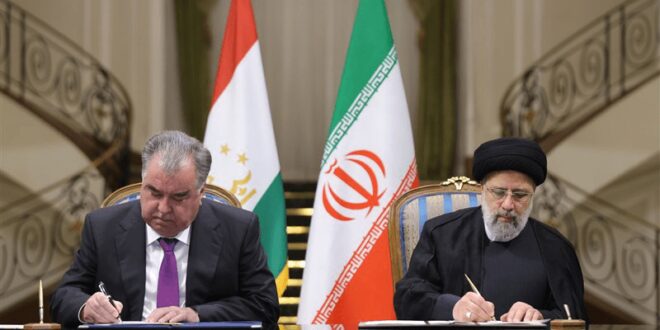Over the last two years, Tehran has sought to increase its influence in Central Asia, convinced that changes in the region and more broadly make that an important goal; and it views Tajikistan, a country with which it shares some but far from all cultural characteristics, as a key player who can help it to do so, Yevgeny Troitsky says.
According to the senior scholar at the Center for Eurasian Research at Tomsk State University, Tehran has six reasons for expanding its attention to Central Asia and compelling ones to believe that Dushanbe can be an important ally in pursuit of that goal (ia-centr.ru/experts/ia-centr-ru/politika-irana-v-tsentralnoy-azii-v-novykh-usloviyakh/).
The six reasons behind Iran’s expanded focus on Central Asia are as follows:
First, Tehran is worried about the weakening of the position of Russia in that region because of Moscow’s concentration on Ukraine.
Second, it is also disturbed by the increasing influence of Turkey on the region especially via Azerbaijan but also in Turkmenistan.
Third, it is worried that destabilization in Afghanistan will lead to destabilization in Central Asia more generally and that could lead to clashes on the Iranian border and the flood of refugees into Iran.
Fourth, it is concerned about the increasingly pro-Western stance of the Pakistan government.
Fifth, Tehran believes that having joined the Shanghai Cooperation Organization, it is now in a better position to reach out to Central Asian countries.
And sixth, Tehran has concluded that having normalized relations with Saudi Arabia, it will be able to refocus attention from the south to the north and thus be better able to influence Central Asian countries.
While the Iranian government in the first instance wants to ensure that Central Asian countries do not become allies of Turkey but instead remain neutral and is prepared to expand trade relations with all the countries in the region, it is devoting particular attention to work with Tajikistan, Troitsky says.
The Tomsk scholar points out that “among all the countries of Central Asia, Tajikistan is closer to Iran in a cultural sense,” with a closely related language but with two important differences: Tajiks are primarily Sunni Muslims rather than Shiite, and they were far more secularized by the Soviet authorities than Iran has been for more than a generation.
But despite those limiting factors, Troitsky continues, “over the last several years, the two countries have been developing political, economic and even military-technical cooperation,” including the opening of an Iranian drone factory in Tajikistan and the announcement of plans to agree to a radical expansion in relations over the course of this decade.
Among the steps Tehran and Dushanbe have agreed to already are the renewal of direct flights between the two countries, the formation of a joint investment council, and a dramatic expansion in Iranian investment in Tajikistan, first and foremost in the petroleum sector but also for infrastructure projects like the completion of the Andzob tunnel.
 Eurasia Press & News
Eurasia Press & News




